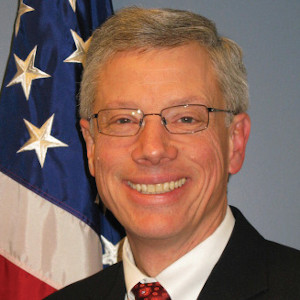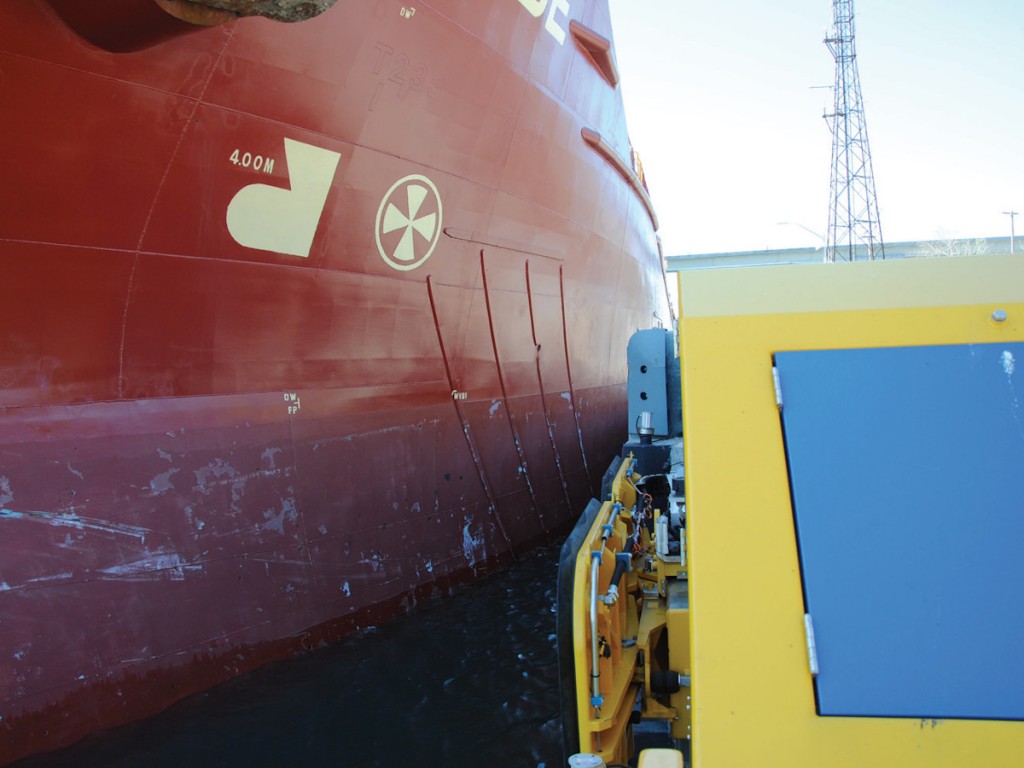The introduction of HFM [Hands Free Mooring] technology has boosted Seaway efficiency.
As the St. Lawrence Seaway’s 60th anniversary year comes to a close, recent developments in technology and innovation have played a crucial role in improving the penetration of commercial ships into the industrial heartland of North America and in exporting products to overseas markets. So went the central message of Craig Middlebrook, deputy administrator of the Washington-based Saint Lawrence Seaway Development Corporation (SLSDC), while addressing, in mid-November, the 15th annual Highway H20 conference in Toronto.
Such a technology, first applied in Australia, uses vacuum pads instead of lines to hold ships in place as they transit locks. It enables faster and more efficient transits while also enhancing workplace and operational safety for employees and for customers. In recent months, HFM was installed in the two US locks (Massena, NY) after being previously installed at the 13 Canadian locks over the past two years.

It is estimated that HFM can reduce lock transits by up to seven minutes. Nine to 12 vessels typically navigate each Seaway lock daily.
“But the benefit of HFM to the system extends beyond the significant increase in transit safety and efficiency,” Middlebrook said. “The elimination of Seaway Fitting requirements on vessels through the use of HFM brings a significant increase in vessel accessibility, increasing the number of vessels that can now transit the Seaway by almost tenfold. And we have begun seeing this benefit firsthand with first time entrants entering the system on a regular basis.”
He described HFM as “a harbinger of the future technology-driven changes coming to commercial vessel operations and navigation, and a truly exciting operational advancement.”
Vessel Traffic Management
Otherwise, Middlebrook noted things were at the early stages of the latest technology project to modernize the Seaway’s vessel traffic management system –incorporating Big Data concepts and how one can harness their benefits. This is a joint effort with the Canadian Seaway and the Volpe National Transportation Systems Center in Cambridge, Massachusetts to develop a new vessel traffic flow management system.

“Just like AIS was in its day, and HFM is today, this new technology will be a groundbreaking advance in the way we manage, schedule, and predict vessel traffic in the Great Lakes Seaway System,” he said. “This system would enable extremely precise and accurate voyage planning capabilities for each vessel transiting throughout the entire Great Lakes St. Lawrence Seaway System. While we are several years away from the final product of this effort, our vessel and port stakeholders are very excited about the potential of this technology to improve their operations.”
As with new technologies, the SLSDC is also constantly working to increase system efficiencies with upgraded infrastructure. The U.S. Seaway’s Asset Renewal Program has completed over a decade of focused project work to modernize our locks, equipment, and facilities.
Meanwhile, a bill recently introduced in Congress would rename the SLSDC by taking on the words Great Lakes. It would be retitled the Great Lakes St. Lawrence Seaway Development Corporation – in recognition of the broader role the agency plays, aside from operating the locks on the US side of the St. Lawrence River through Lake Ontario. The chief sponsor of the bill, Marcy Kaptur (D-Toledo) has bi-partisan support from around the Great Lakes, including Michigan and Pennsylvania.





